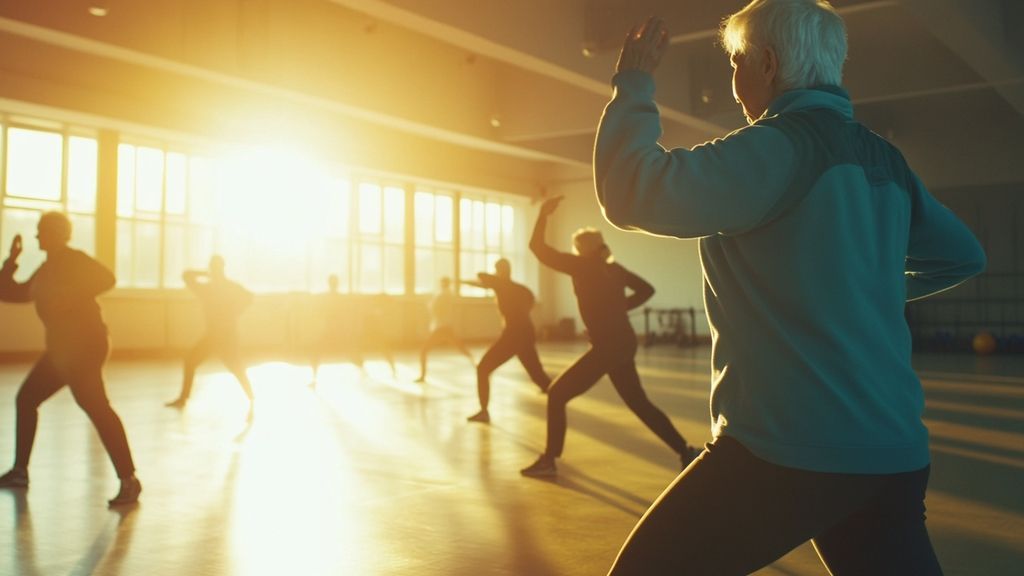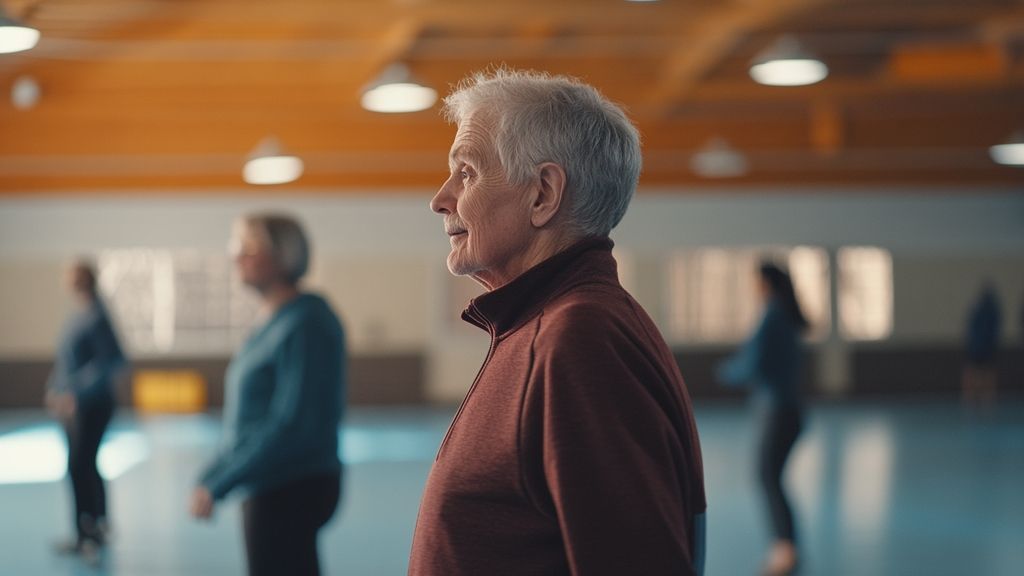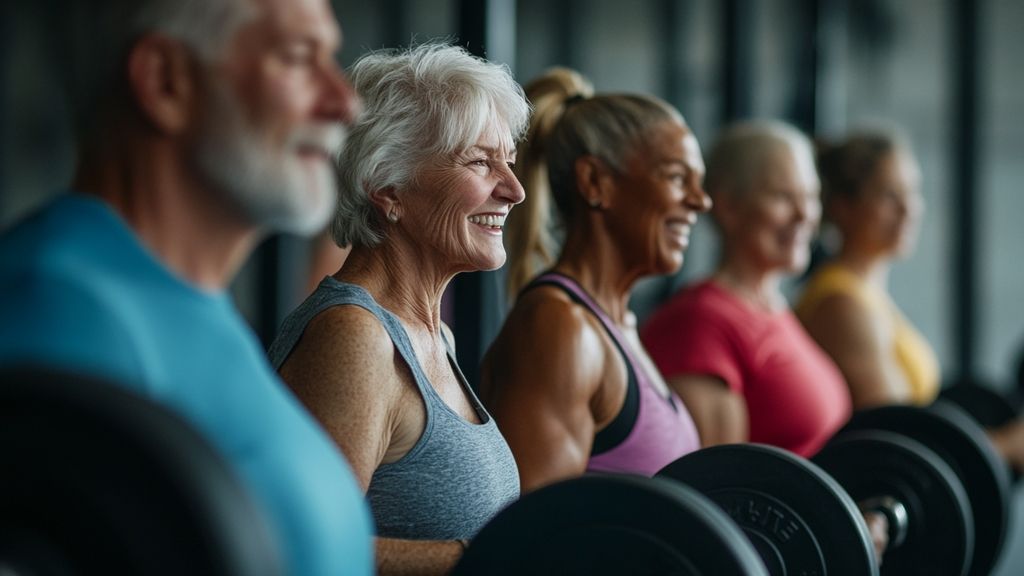CrossFit has evolved into a dynamic fitness community, appealing to individuals of all ages. However, when it comes to older athletes, the approach must change to ensure inclusivity and effectiveness. Emphasizing adaptations for seniors is not just a necessity; it is an opportunity to create a supportive environment where every member can thrive. Paying close attention to unique needs, safety, and long-term performance is essential for both gym owners and coaches.
This guide delves into adapting CrossFit workouts for older individuals and outlines strategies that enhance performance while prioritizing safety. From understanding the physiological needs of older athletes to modifying workout routines, this article will equip you with the necessary tools to embrace an inclusive CrossFit culture.
Understanding the Needs of Older CrossFit Athletes
The journey of older CrossFit athletes is distinct, often characterized by both physical and psychological factors. As we age, our bodies undergo various changes, which directly affect our performance and recovery. Understanding these aspects allows coaches to tailor their training methods.
Physical Considerations
One of the primary concerns for older athletes is the rate of recovery. Unlike younger participants, older individuals may face slower recovery times, which necessitates thoughtful adjustments to workout frequency and intensity. A workout designed for a younger demographic may lead to undue strain for seniors.
Another important factor is reduced mobility. Aging impacts flexibility and range of motion, making specific movements more challenging. Coaches should prioritize exercises that enhance mobility and create workout alternatives for movements that could pose risks.
Additionally, older athletes face a heightened risk of injury. This emphasizes the necessity of proper technique and modifications, ensuring workouts are both safe and effective.
Psychological Aspects
Understanding the motivational drivers for older athletes is just as crucial. Many older athletes are motivated by different factors compared to their younger counterparts; whether seeking health benefits, community engagement, or a competitive edge. Recognizing these drivers can guide coaches in crafting supportive and motivational training setups.
Building confidence within older participants is essential. Providing tailored challenges that can be achieved promotes a sense of accomplishment and encourages continued participation.
The Benefits of CrossFit for Seniors

CrossFit does more than build physical strength—it offers various advantages for older adults that extend far beyond the gym floor. Here are some notable benefits:
Enhanced Strength and Flexibility
Regular CrossFit training positively impacts muscle and joint strength, which is vital for maintaining independence. Improved flexibility is also a direct benefit, allowing older athletes to perform daily activities with reduced strain.
Improved Mental Health
Engaging in CrossFit fosters social connections among participants, which is often beneficial for mental health. The release of endorphins during exercise further enhances this effect, promoting a sense of well-being.
Increased Longevity and Quality of Life
A consistent exercise routine correlates with longer, healthier lives. Participating in CrossFit can diminish age-related health issues, creating a more vibrant lifestyle.
Acknowledging these benefits is essential for gym owners and trainers as they work to create a vibrant, inclusive atmosphere for older athletes. Emphasizing the positive outcomes associated with their participation can motivate older individuals to engage more actively.
Adapting CrossFit Workouts for Older Adults
Designing an inclusive CrossFit program requires adapting workouts that cater to the specific needs of older adults. Transitioning away from a one-size-fits-all approach ensures that every participant can engage safely and efficiently.
Modifications for Common CrossFit Exercises
One key adaptation involves scaling down the intensity of workouts. Creating a challenging yet achievable workout level for older participants allows for continued improvement without risking injury. Rather than imposing high-intensity exercises right away, introductory modifications scaffold a participant’s journey.
Offering Alternative Movements
Older athletes may face difficulty with complex movements such as Olympic lifts. Providing alternative movements that focus on strength and conditioning without comprising safety is paramount. Options such as light kettlebell exercises or resistance band workouts can deliver similar benefits with lower risks.
Balancing Intensity and Safety
Beginning with individual assessments for each older athlete can illuminate their current fitness levels, limitations, and overall goals. Additionally, implementing a gradual increase in workout intensity—known as progressive overload—empowers athletes to build strength safely over time.
Injury Prevention Strategies

Ensuring safety for older CrossFit athletes is a priority. Implementing effective injury prevention strategies can significantly reduce injury risks, improving the CrossFit experience.
Tailored Warm-Ups
Warming up is crucial for any workout, but especially for older athletes. Session warm-ups should focus on increasing blood flow and flexibility, incorporating dynamic stretches that mirror upcoming movements.
Structured Cool-Downs
A well-structured cool-down should follow each workout. Integrating static stretching and mobility exercises aids recovery and flexibility, maintaining joint health.
Strength Training Focus
Strength training targeting the muscles around key joints can enhance support and minimize injury potential. Exercises targeting knees, hips, and shoulders fortify these areas, making them more resilient against strains and injuries.
Balance and Coordination Drills
Including balance exercises is essential for older athletes. Drills focused on improving balance and coordination can prevent falls and bolster confidence during workouts.
Listen to the Body
Encouraging older athletes to be mindful of their bodies’ signals is significant. Gentle reminders to communicate any discomfort or pain can prevent overuse injuries and promote a positive training environment.
Implementing a Senior-Friendly CrossFit Program
Creating a structured CrossFit program that focuses on older adults requires planning. Steps to design and advocate for a senior-friendly program include:
Assessment and Personalization
Initiating the program with individual assessments can help understand each participant’s fitness levels and health concerns. Personalization ensures that workouts meet these specific needs properly.
Functional Fitness Emphasis
Focusing on functional exercises enhances seniors’ daily living activities. Prioritizing movements such as squats, lifts, and balance drills allows older athletes to enhance their overall independence.
Incorporating Variety
Incorporating a variety of workouts sustains engagement and interest, blending strength, flexibility, and cardiovascular health. A diversified approach can help maintain motivation among older athletes.
Outreach and Partnerships
Engaging with local community centers and healthcare professionals could highlight the program effectively. Advertising and joint events can extend outreach and referrals.
Continuous Feedback
Ongoing feedback encourages participants to voice their thoughts, enhancing program adaptability and effectiveness. Regularly evaluating the program ensures it aligns with participants’ evolving needs.
CrossFit for Seniors: An Inclusive Journey

Adapting CrossFit for seniors transcends mere modifications; it focuses on cultivating an inclusive community where every member feels valued. By truly understanding the unique needs of older athletes and implementing thoughtful adaptations, gyms can create a welcoming environment for everyone. The benefits of CrossFit reach across generations—through the right approach, we empower athletes of all ages to achieve strength, camaraderie, and satisfaction in their fitness journeys together.
